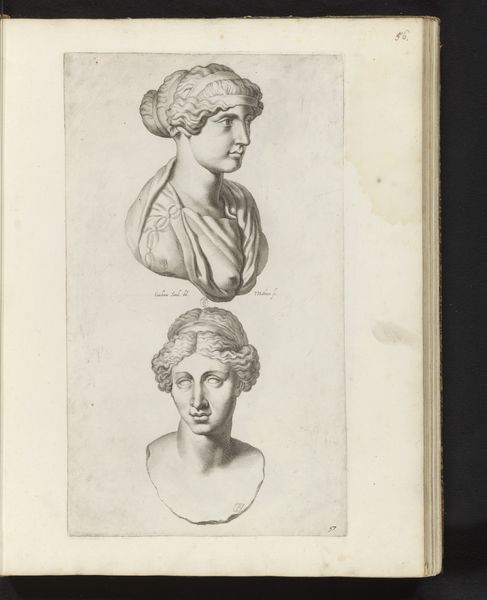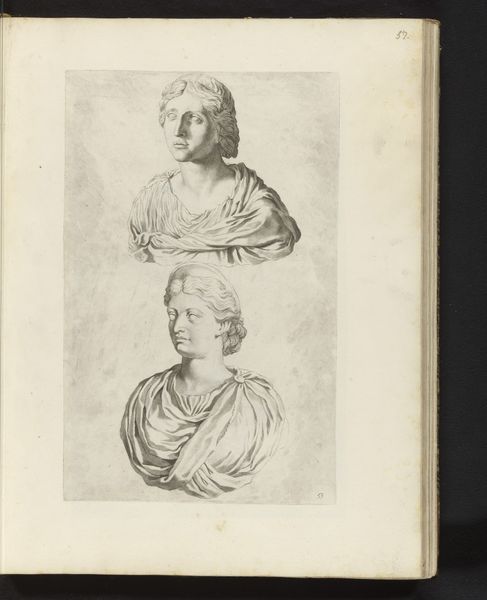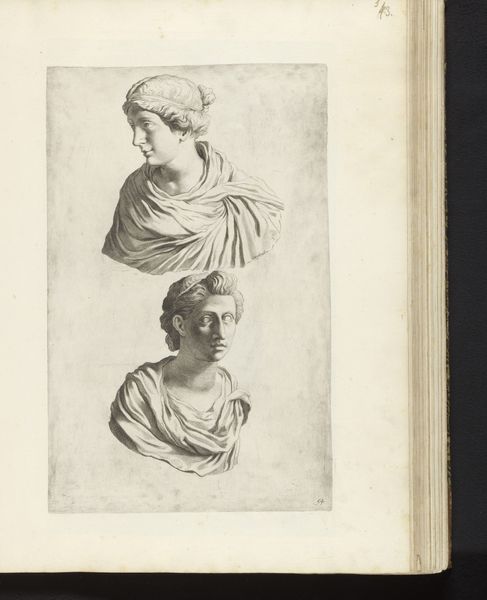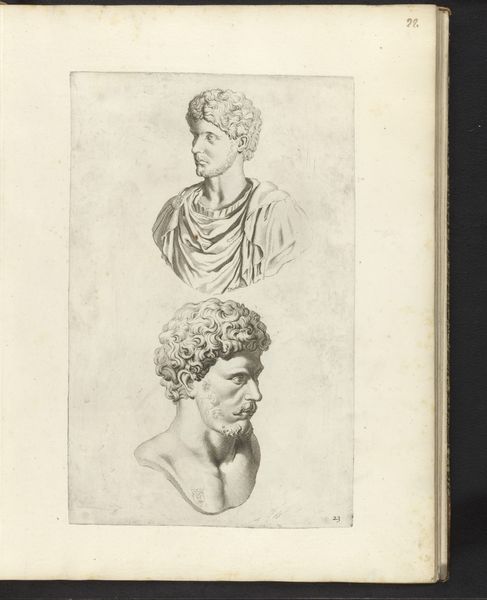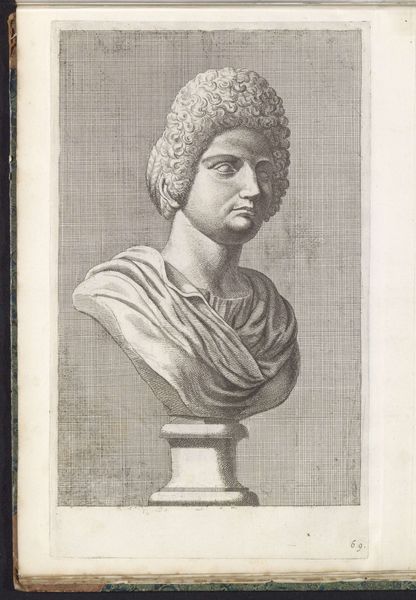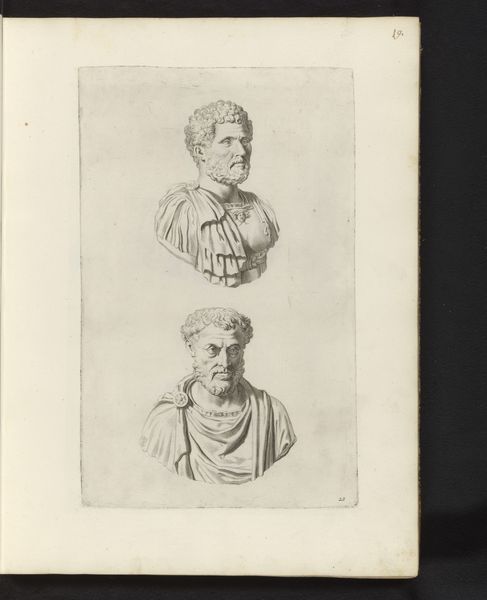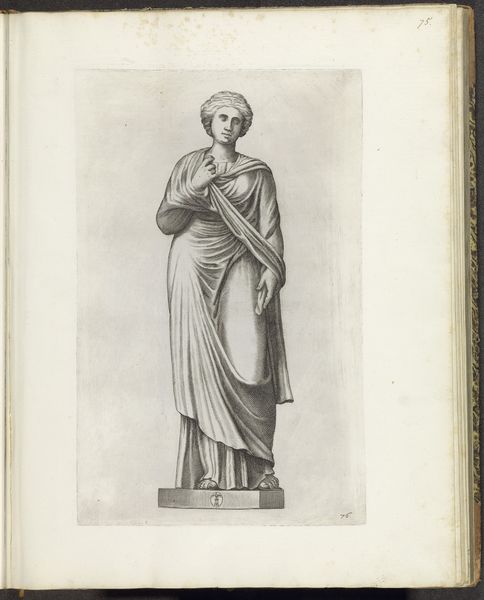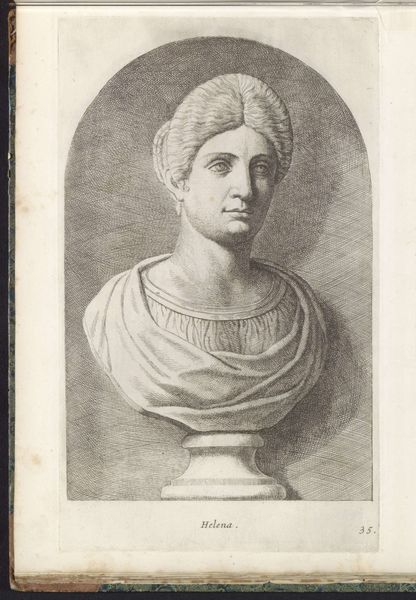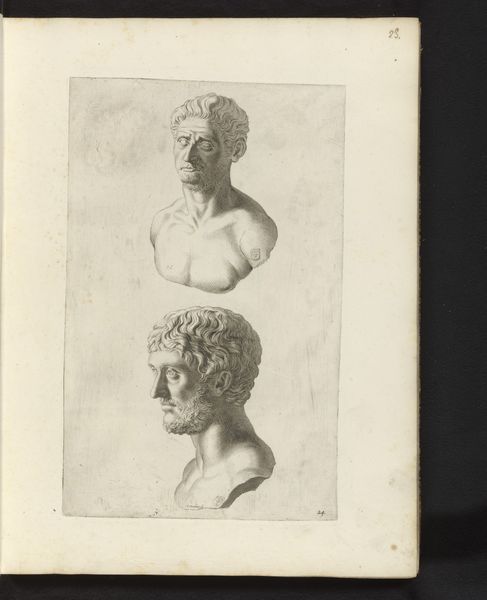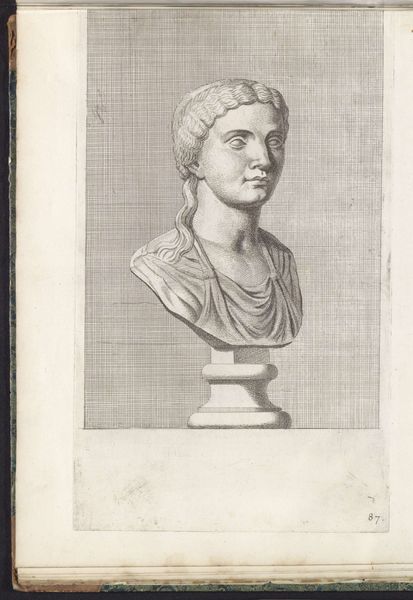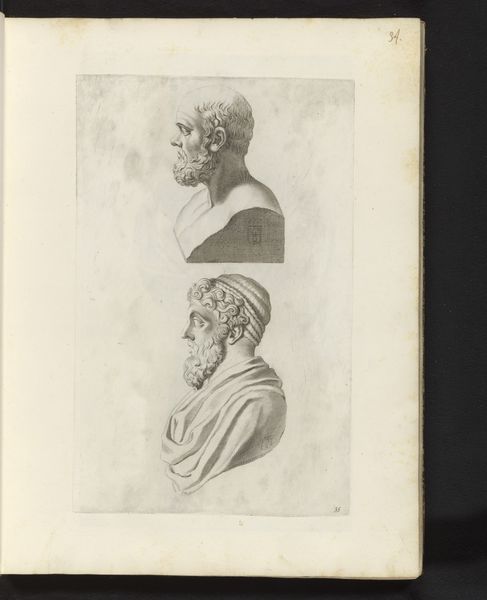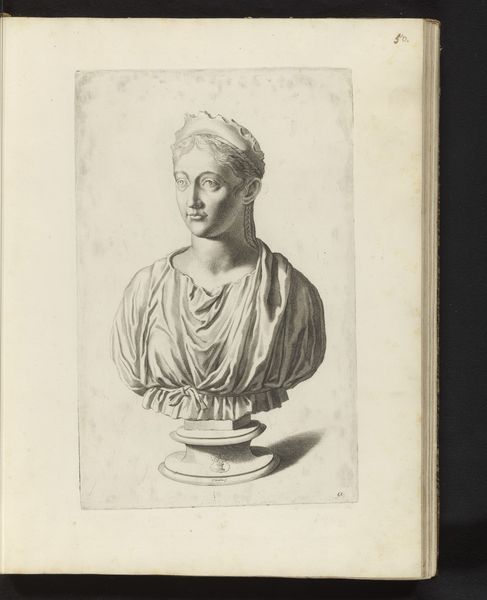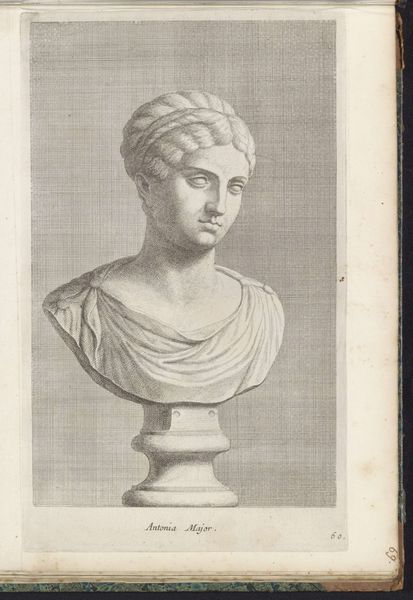
engraving
#
portrait
#
old engraving style
#
sketch book
#
classical-realism
#
figuration
#
personal sketchbook
#
ancient-mediterranean
#
line
#
history-painting
#
engraving
Dimensions: height 407 mm, width 237 mm
Copyright: Rijks Museum: Open Domain
Curator: This engraving, created between 1636 and 1647 by Luca Ciamberlano, features two busts of Empress Julia Titi. Editor: They have such different vibes, don't they? The top one is formal, almost regal, while the lower bust feels a little more… earthbound, perhaps even vulnerable. It’s fascinating to see them together like this. Curator: What strikes me is how these images circulated—prints like these played a key role in disseminating classical art. It was all part of establishing certain figures as authorities. This allowed the classical aesthetic to persist throughout European history. Editor: Definitely. Notice the hair. The top bust features an elaborate coiffure, while the bottom one has more freely styled curls. I'm drawn to how hair acts as an emblem of status, of presentation to the outside world. Also, what could be read out of the symbols included on each bust, and why are the different? Curator: And who got to determine what an ‘appropriate’ depiction even looked like? This era sees a fascinating dance between artistic vision and public expectation, particularly when portraying individuals who were themselves symbols of power. Were these for a particular purpose or distributed more generally? Editor: These prints also allow us to ponder notions of idealization. The engravings take ancient forms, in the shape of busts, but also flatten these through their specific technique. By looking at ancient iconography, we must ponder its influence on notions of beauty that still shape our cultural values. Curator: Prints democratized art, made it accessible. However, that accessibility was still limited by the politics of who got to be portrayed, and for what purposes. Editor: I'm struck by how such relatively simple line work conveys a complex story, from artistic ambition to power dynamics. It leaves so much open to interpretation! Curator: It serves as a reminder that even seemingly straightforward portraiture is embedded within larger historical, social, and aesthetic currents.
Comments
No comments
Be the first to comment and join the conversation on the ultimate creative platform.
